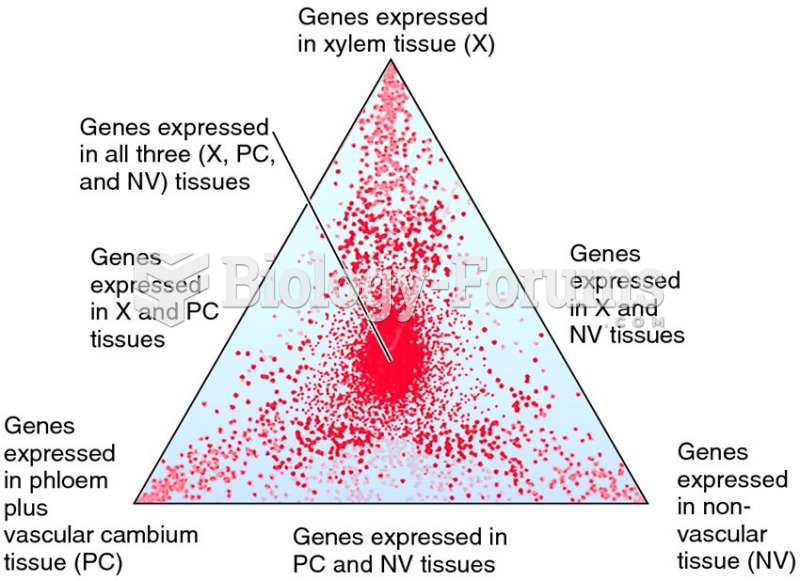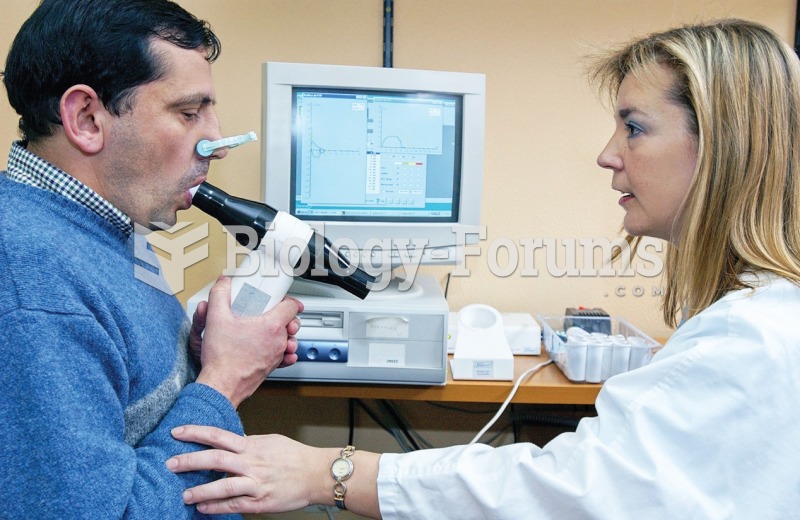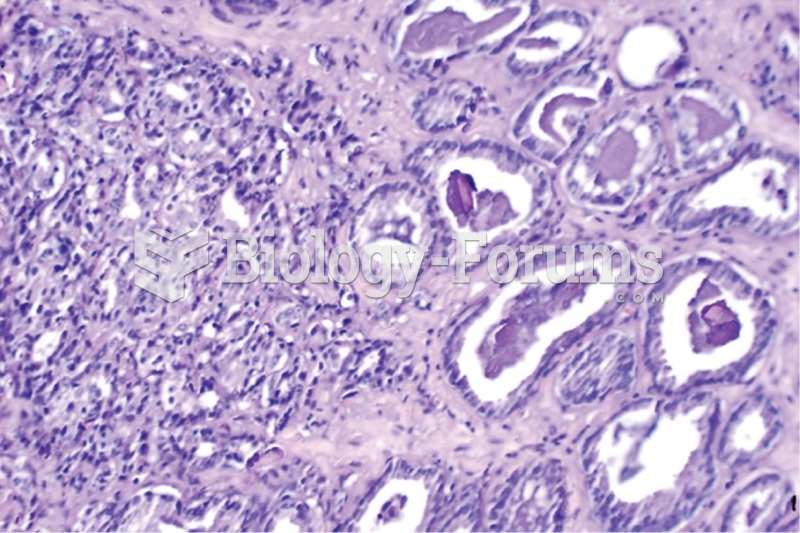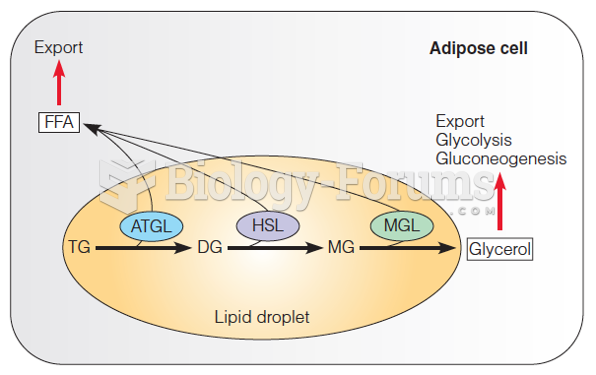|
|
|
About 100 new prescription or over-the-counter drugs come into the U.S. market every year.
The highest suicide rate in the United States is among people ages 65 years and older. Almost 15% of people in this age group commit suicide every year.
Symptoms of kidney problems include a loss of appetite, back pain (which may be sudden and intense), chills, abdominal pain, fluid retention, nausea, the urge to urinate, vomiting, and fever.
Fatal fungal infections may be able to resist newer antifungal drugs. Globally, fungal infections are often fatal due to the lack of access to multiple antifungals, which may be required to be utilized in combination. Single antifungals may not be enough to stop a fungal infection from causing the death of a patient.
More than one-third of adult Americans are obese. Diseases that kill the largest number of people annually, such as heart disease, cancer, diabetes, stroke, and hypertension, can be attributed to diet.
 Triangle plot showing gene expression related to xylem, phloem, and nonvascular tissue in Arabidopsi
Triangle plot showing gene expression related to xylem, phloem, and nonvascular tissue in Arabidopsi
 Computerized spirometry is used in medical office settings as well as in hospitals and other medical ...
Computerized spirometry is used in medical office settings as well as in hospitals and other medical ...





